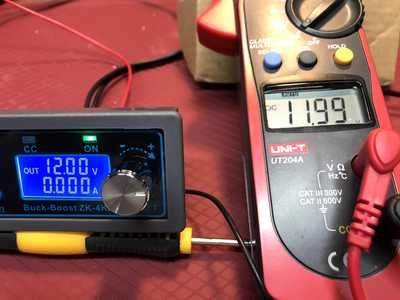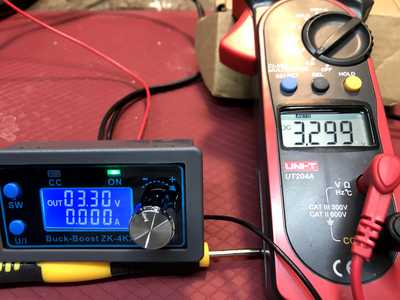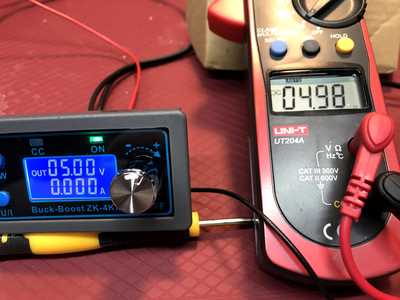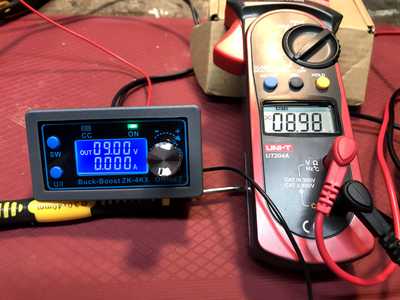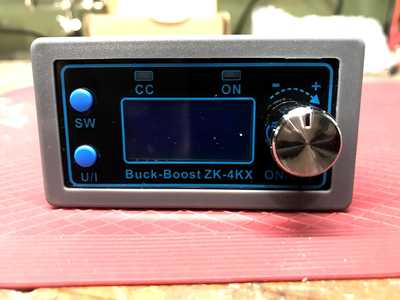Today I’ll show you how to convert an old notebook computer power adapter into a useful variable power supply for your workbench. This is a great project for beginners and experts alike!
Article with parts and wiring details: https://dronebotworkshop.com/simple-supply/
Today we will build a useful bench power supply that has both a fixed (5-volt) output and a variable 0 -17-volt output. It's a useful addition to any workbench, and it’s safe and easy to build.
We’ll repurpose a common netbook power adapter, there are thousands of these lying around from computers that have seen better days. They commonly have a 19-volt output, with decent current capabilities.
The design is further simplified by using some buck converter modules, one for a fixed output and one with a variable output and a digital display. The convertor I used even has a memory feature, allowing you to store and recall multiple output voltages. It was easily available on Amazon.
This is really easy to build, so even if you are just getting started it's a great project. And as all the nasty high-voltages are safely tucked away in the power brick you don’t need to worry about shocking yourself.
Here is what we will be covering today:
00:00 - Introduction
05:56 - Power Supply Design & Components
06:42 - Wiring Diagram
07:54 - Getting all the parts together
11:44 - Testing the Modules
16:15 - Building the Power Supply
21:16 - Testing the Power Supply
I didn’t have time to paint or label the case but even so, this build looks pretty good, thanks to the “DROK 180081 Numerical Control Step Down Voltage Regulator” that forms the heart of the design. I picked mine up on Amazon, along with the “LM2596 DC to DC Buck Converter” modules used for the fixed output.
You don’t have to build the exact power supply I did, you can use this technique for repurposing old power adapters to create all sorts of custom power supplies. Just make sure to observe the current rating and the polarity of the supply output.
You’ll find an article accompanying this video on the DroneBot Workshop website at https://dronebotworkshop.com/simple-supply/ . Between it and the video, you should have no trouble safely assembling this useful addition to your workbench.
"Never trust a computer you can’t throw out a window." — Steve Wozniak
Hi Bill (or anyone else out there),
I love this simple design for a variable power supply and have decided to build one. I can source all the parts here in Australia except for the DROK 180081 Numerical Control Step Down Voltage Regulator.
Can anyone recommend a reliable source for this? Amazon say they are out of stock and don't know when it will be available. Prefer not to deal with unknown overseas / China companies.
Cheers,
David
I have not done my project yet, but, I opted for direct from China on this one.
"ZK-4KX CNC DC DC Buck Boost Converter CC CV 0.5-30V 4A Power Module Adjustable Regulated Power Supply for Solar Battery Charging" from Bangoog - don't judge me 😀
Hoping to get to it soon. Just finished my ATX bench power supply today.
"Hardware eventually fails. Software eventually works." - Michael Hartung
I have received it (notice it is not the same as Bill's), moved it several times on my workbench, in and out of storage etc. Figured I'd fire it up just so I could reply.
Tomorrow I'll test it with load, and figure out the settings.
"Hardware eventually fails. Software eventually works." - Michael Hartung
I'm just about ready to build myself this power supply. . . I was wondering if someone might have an opinion on two different converter modules. There's the one that Bill used:
https://www.amazon.com/gp/product/B01FNVESV2/ref=ox_sc_saved_title_3?smid=&psc=1
Or a buck-boost converter:
https://www.amazon.com/gp/product/B089ND7PTH/ref=ox_sc_act_image_4?smid=&psc=1
Any opinions on what might be the advantages of one over another?
Many thanks,
Robert
I also couldn't find the same buck converter, that Bill used in his video, in NewxZealand.
So also purchased from China.
Haven't received it yet but I am hoping it will do the job.
It is a WZ605E non wifi unit.
Plossyl (Dennis)
Sorry made a typo in my last comment.
- The buck converter is a WZ3605E.
@plossyl There is no WiFi in a buck converter.
First computer 1959. Retired from my own computer company 2004.
Hardware - Expert in 1401, and 360, fairly knowledge in PC plus numerous MPU's and MCU's
Major Languages - Machine language, 360 Macro Assembler, Intel Assembler, PL/I and PL1, Pascal, Basic, C plus numerous job control and scripting languages.
Sure you can learn to be a programmer, it will take the same amount of time for me to learn to be a Doctor.
I am building a similar project based on Bill's but am adding a few extras. I found the same case, using LM2596 to produce 3.3, 5, and 12 Volts. I got the same DROK which will go up to about 17V using a 90W brick, 19V at 4.74A. I am also adding 4 LEDs above the DROK to show each voltage is ON. This is the first electronics project I have built since the late 50's/early 60's so learning a lot. Next is the ATX, the case I ordered was too small so a new one will be here in 3 weeks.
First computer 1959. Retired from my own computer company 2004.
Hardware - Expert in 1401, and 360, fairly knowledge in PC plus numerous MPU's and MCU's
Major Languages - Machine language, 360 Macro Assembler, Intel Assembler, PL/I and PL1, Pascal, Basic, C plus numerous job control and scripting languages.
Sure you can learn to be a programmer, it will take the same amount of time for me to learn to be a Doctor.
I'm doing a build similar to this, but different (3 screw trimmed variable buck converters with separate volt/ammeter displays) but I was curious about the wiring of the ground outputs from the converters. Is it reasonable to assume they are a common ground?
I edit my posts to fix typos, correct grammar, or improve clarity. On-screen keyboards are evil.
@binaryrhyme That's what I did.
First computer 1959. Retired from my own computer company 2004.
Hardware - Expert in 1401, and 360, fairly knowledge in PC plus numerous MPU's and MCU's
Major Languages - Machine language, 360 Macro Assembler, Intel Assembler, PL/I and PL1, Pascal, Basic, C plus numerous job control and scripting languages.
Sure you can learn to be a programmer, it will take the same amount of time for me to learn to be a Doctor.

